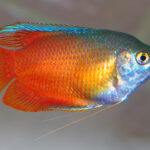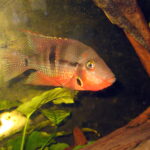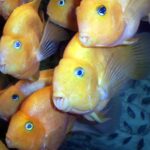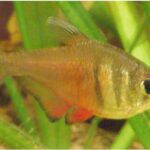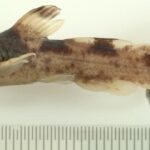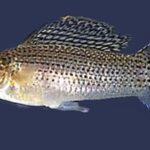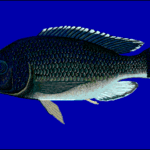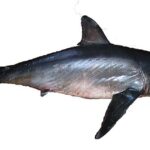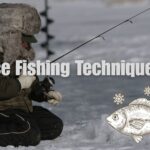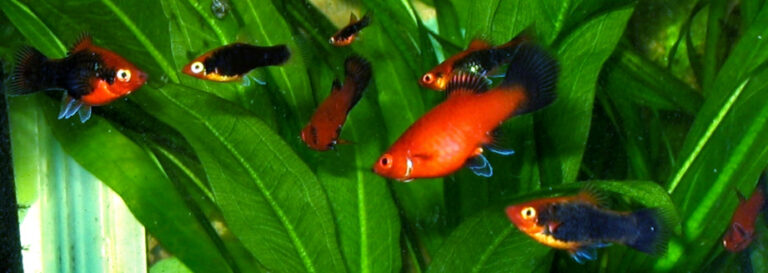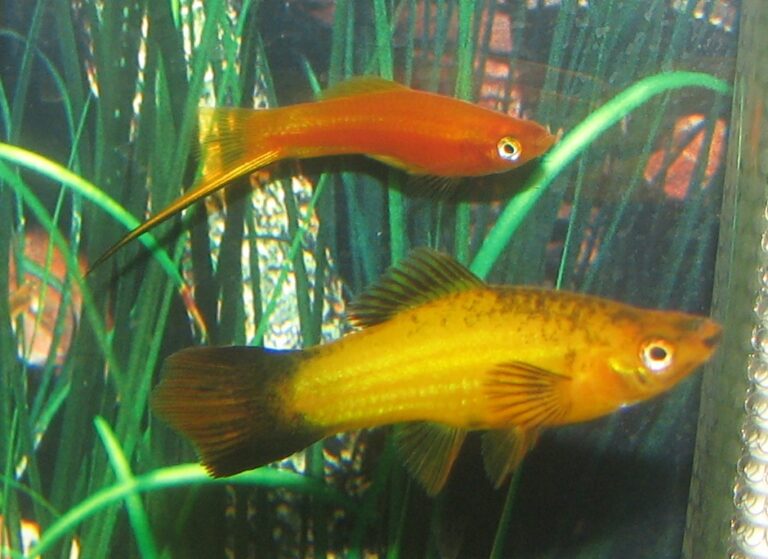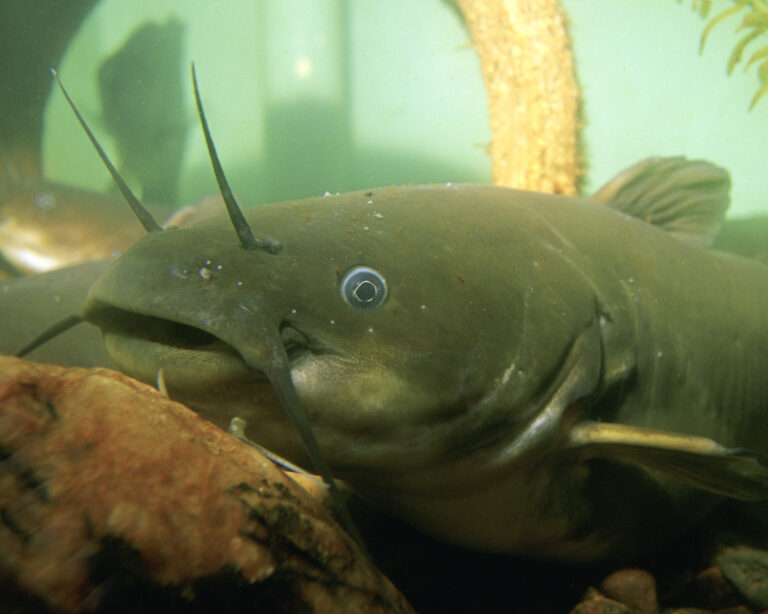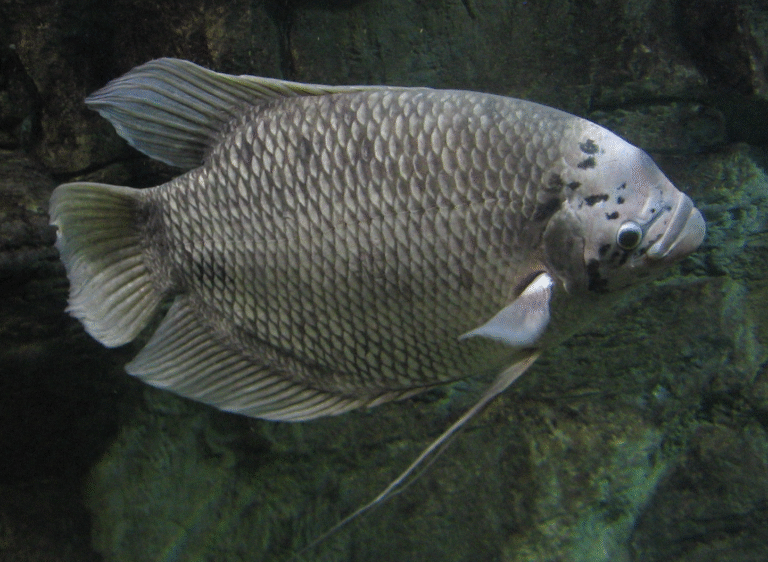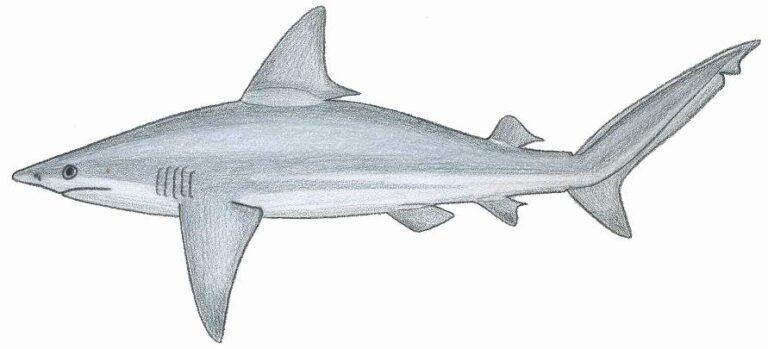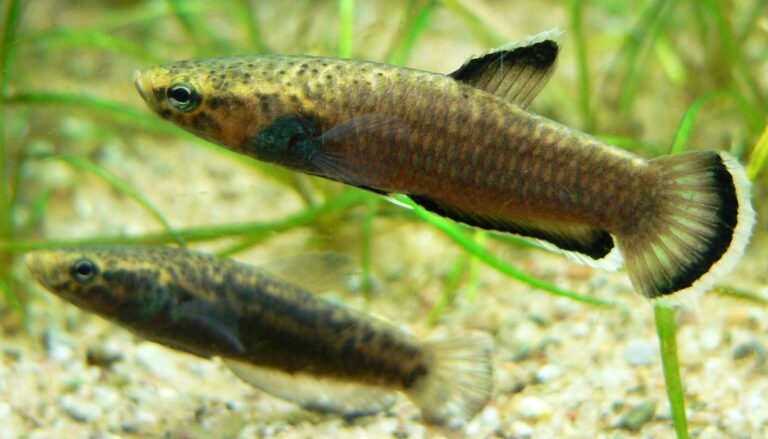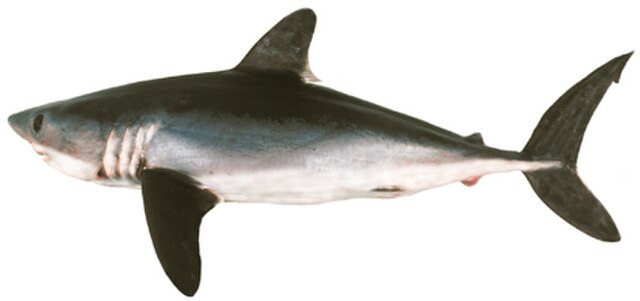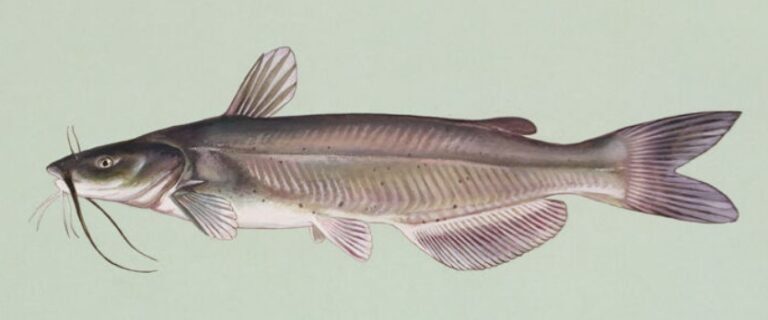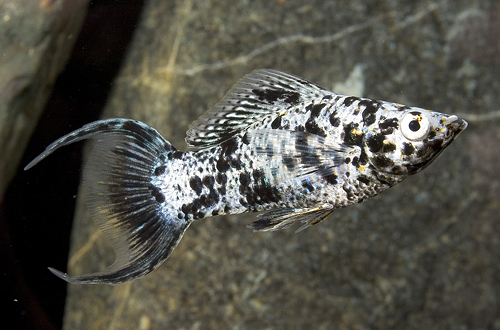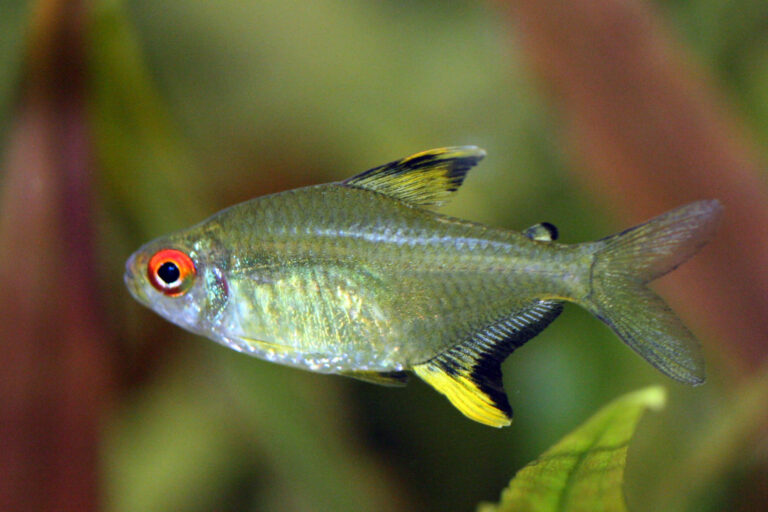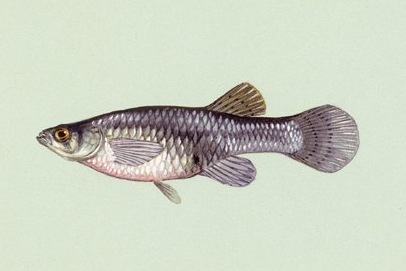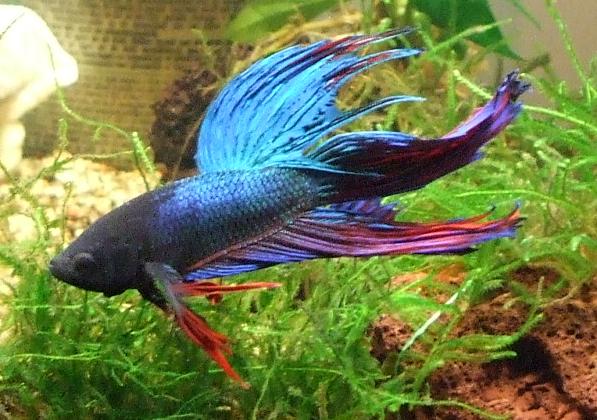Veiltail Goldfish
By Ryan Maron | Last Modified: July 4, 2025
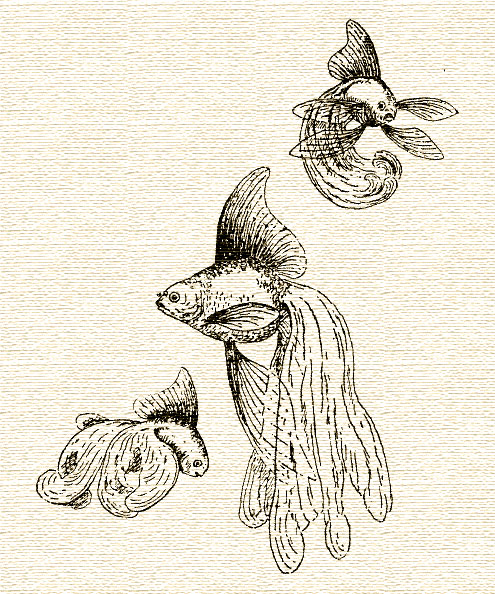
The Veiltail Goldfish stands as one of the most distinctive and graceful varieties within the goldfish family, renowned for its characteristic flowing, gossamer-like tail fins that create an ethereal underwater display. Known scientifically as *Carassius auratus*, this fancy goldfish variety has captured the hearts of aquarium enthusiasts worldwide through centuries of selective breeding that has enhanced its remarkable finnage. The Veiltail Goldfish represents a significant achievement in ornamental fish breeding, combining aesthetic beauty with the hardy nature that has made goldfish among the most successful aquarium species globally. These fish serve an important role in the aquarium trade, contributing millions of dollars annually to the ornamental fish industry while providing countless hobbyists with a rewarding introduction to fishkeeping. Their peaceful temperament and stunning appearance make them ideal candidates for both beginner and advanced aquarists seeking to create visually striking aquatic displays.
| Feature | Details |
| Common Name | Veiltail Goldfish |
| Scientific Name | Carassius auratus |
| Family | Cyprinidae |
| Typical Size | 15-20 cm (6-8 inches), 200-400g |
| Habitat | Aquarium environments |
| Diet | Omnivorous |
| Distribution | Captive-bred worldwide |
| Conservation Status | Not Evaluated (Domesticated) |
Taxonomy & Classification
The Veiltail Goldfish belongs to the family Cyprinidae, which encompasses the largest family of freshwater fish species worldwide. Within this extensive family, the species *Carassius auratus* represents one of the most extensively modified fish through artificial selection. The taxonomic classification places Veiltail Goldfish within the order Cypriniformes, class Actinopterygii, and phylum Chordata. This variety emerged through selective breeding programs that began in ancient China over a millennium ago, with the distinctive veiltail characteristics becoming prominent during the Song Dynasty period.
The relationship between Veiltail Goldfish and their wild ancestors, the Prussian carp (*Carassius gibelio*), demonstrates remarkable genetic plasticity. Modern molecular analysis reveals that domesticated goldfish retain significant genetic diversity despite centuries of selective breeding. The veiltail trait results from specific genetic mutations affecting fin ray development and growth patterns, creating the characteristic elongated, flowing finnage. These genetic modifications represent dominant traits that can be reliably passed to offspring when proper breeding protocols are followed.
Subspecies classification within fancy goldfish varieties remains somewhat fluid, with the Veiltail Goldfish often grouped alongside other long-finned varieties such as the Fantail and Ryukin. The World Aquaculture Society recognizes distinct breeding standards for veiltail characteristics, including specific measurements for tail spread, fin length ratios, and body proportions that distinguish this variety from related forms.
Physical Description
The Veiltail Goldfish exhibits distinctive morphological characteristics that set it apart from other goldfish varieties. The most striking feature remains the dramatically elongated tail fin, which can extend to lengths exceeding the fish’s body length by 50-75 percent. This caudal fin displays a gossamer-like quality with delicate fin rays that create flowing, veil-like movements through the water column. The tail fin typically maintains perfect symmetry when viewed from behind, with both lobes developing equally to create an elegant fan-shaped display.
Body conformation in Veiltail Goldfish shows moderate compression laterally, creating an egg-shaped profile when viewed from the side. Adult specimens typically reach lengths of 15-20 centimeters, excluding tail fin measurements, with healthy individuals weighing between 200-400 grams. The dorsal fin rises prominently from the back, often displaying the same elongated characteristics as the tail fin, though to a lesser degree. Pectoral and pelvic fins show moderate extension, contributing to the overall flowing appearance during swimming.
Coloration in Veiltail Goldfish encompasses the full spectrum available within the goldfish family. Common color patterns include solid orange, red, white, black, and calico combinations. Metallic scales create brilliant reflective surfaces that enhance color intensity under proper lighting conditions. Some specimens display nacreous scaling, which produces a pearl-like sheen across the body surface. The scales themselves are typically large and well-defined, contributing to the fish’s overall robust appearance despite their delicate fin structure.
The head profile shows characteristic goldfish proportions with large, prominent eyes that provide excellent vision for foraging activities. The mouth remains relatively small and directed slightly downward, reflecting the species’ bottom-feeding tendencies inherited from their wild ancestors. Gill covers appear well-developed and provide efficient respiratory function despite the fish’s modified body structure.
Habitat & Distribution
Veiltail Goldfish exist exclusively within human-controlled environments, having been developed entirely through captive breeding programs over centuries. Their distribution spans globally wherever ornamental fish keeping occurs, with major breeding operations concentrated in Asia, North America, and Europe. Commercial breeding facilities in countries such as China, Malaysia, Israel, and the United States produce millions of Veiltail Goldfish annually for international distribution.
Within aquarium environments, Veiltail Goldfish require specific habitat parameters to maintain optimal health and display their characteristic finnage properly. Water temperature ranges of 18-24°C (65-75°F) provide ideal conditions, though these hardy fish can tolerate broader temperature fluctuations. pH levels between 6.5-7.5 support healthy gill function and nutrient absorption, while moderate water hardness of 100-200 mg/L calcium carbonate equivalent promotes proper scale development.
The flowing fins of Veiltail Goldfish make them particularly sensitive to water quality parameters. Ammonia and nitrite levels must remain at zero, while nitrate concentrations should stay below 20 mg/L to prevent fin rot and other bacterial infections. These fish prefer well-oxygenated water with gentle circulation that allows their delicate fins to flow naturally without excessive turbulence that might cause damage.
Substrate preferences lean toward fine gravel or sand that allows for natural foraging behaviors without risking fin tears from sharp edges. Live or artificial plants provide environmental enrichment and help maintain water quality through nutrient uptake, though plant selection must consider the fish’s tendency to uproot vegetation during feeding activities.
Diet & Feeding Behavior
Veiltail Goldfish maintain omnivorous feeding habits inherited from their wild carp ancestors, demonstrating remarkable adaptability in their dietary preferences. Their natural feeding behavior involves methodical bottom-sifting, where they investigate substrate materials for organic matter, small invertebrates, plant materials, and detritus. This foraging instinct remains strong in captive specimens, often leading to substrate disruption during feeding periods.
In aquarium settings, Veiltail Goldfish require balanced nutrition that supports both their metabolic needs and maintains the structural integrity of their elaborate finnage. High-quality commercial goldfish foods provide essential protein levels of 25-30 percent for juvenile fish and 18-25 percent for adults. These formulated feeds contain amino acids necessary for fin regeneration and growth, particularly important given the vulnerability of extended fins to minor damage.
Feeding frequency should follow established patterns of 2-3 small meals daily rather than single large feedings. This approach prevents digestive stress and maintains consistent water quality by reducing waste production. Veiltail Goldfish possess excellent appetites and will readily accept various food types including flakes, pellets, frozen foods, and live prey items such as bloodworms, brine shrimp, and daphnia.
Vegetable matter plays an important role in their diet, with blanched peas, lettuce, and specialized herbivore preparations providing necessary fiber for digestive health. The feeding behavior of Veiltail Goldfish includes persistent food-seeking activities that can last several hours after initial feeding, reflecting their natural grazing tendencies. Overfeeding represents a significant risk, as these fish show little natural restraint when food remains available.
Behavior & Adaptations
Veiltail Goldfish display complex behavioral patterns that reflect both their domesticated nature and ancestral wild instincts. Social behavior tends toward peaceful schooling, with individuals showing preference for group interactions over solitary existence. Within established groups, loose hierarchical structures develop based primarily on size and feeding dominance rather than aggressive territorial disputes. These fish demonstrate remarkable adaptability to human presence, often developing conditioned responses to feeding schedules and caretaker movements.
Swimming patterns in Veiltail Goldfish show distinct modifications compared to their wild relatives due to their elaborate finnage. The extended fins create increased drag during movement, resulting in more graceful but less efficient locomotion. This adaptation requires them to develop stronger swimming muscles and modified swimming techniques that account for their hydrodynamic changes. Despite these challenges, healthy specimens maintain active swimming behavior throughout daylight hours.
Behavioral adaptations include enhanced visual recognition abilities, allowing them to distinguish between different human caretakers and respond to visual feeding cues. Memory retention studies indicate these fish can remember feeding locations and times for periods exceeding three months. Environmental exploration behaviors remain strong, with individuals investigating new objects, substrate changes, and water flow patterns within their habitat.
Temperature-related behavioral changes show seasonal patterns even in controlled environments. During cooler periods, Veiltail Goldfish reduce activity levels and feeding frequency, entering a semi-dormant state that conserves energy. Conversely, warmer temperatures stimulate increased activity, feeding behavior, and social interactions. These fish also demonstrate problem-solving abilities when seeking food, learning to navigate obstacles and access hidden food sources through trial and error learning processes.
Reproduction & Life Cycle
Reproductive behavior in Veiltail Goldfish follows seasonal patterns triggered by temperature and daylight duration changes, typically occurring in spring when water temperatures reach 18-20°C. Sexual maturity develops at approximately 12-18 months of age, with females generally maturing slightly later than males. Breeding readiness can be identified through secondary sexual characteristics, including tubercle development on male gill covers and pectoral fins, while females show increased abdominal fullness from developing eggs.
The spawning process begins with elaborate courtship behaviors where males pursue females through shallow areas, displaying increased coloration and persistent following behavior. Males exhibit spawning tubercles that appear as small white spots on the head and pectoral fins during breeding season. Successful breeding requires specific environmental conditions including gradual temperature increases, abundant vegetation or spawning mops, and high-quality water parameters.
Egg deposition occurs over several hours, with females releasing 2,000-4,000 adhesive eggs that attach to plants or artificial spawning substrates. Males fertilize eggs externally during the spawning process, with fertilization rates typically exceeding 80 percent under optimal conditions. The eggs measure approximately 1.5 millimeters in diameter and require 4-7 days for hatching, depending on water temperature.
Larval development progresses through distinct stages beginning with the absorption of yolk sacs over 48-72 hours post-hatching. Fry initially appear bronze or gray in coloration, developing the characteristic goldfish colors and fin extensions over several months of growth. Young Veiltail Goldfish require specialized feeding with newly hatched brine shrimp, micro-worms, and powdered fry foods during their first weeks of life. The distinctive veiltail characteristics become apparent at 2-3 months of age, with full fin development completing by 6-8 months under proper conditions.
Predators & Threats
Within their natural aquarium environments, Veiltail Goldfish face limited predation risks, though several factors pose significant threats to their wellbeing. The elaborate finnage that defines this variety creates vulnerability to aggressive tank mates, particularly species known for fin-nipping behaviors such as certain tetras, barbs, and cichlids. The flowing fins present irresistible targets for these species, leading to stress, secondary infections, and permanent fin damage that compromises the fish’s defining characteristics.
Bacterial and fungal pathogens represent primary health threats to Veiltail Goldfish populations. The extended surface area of their fins provides increased opportunities for pathogen colonization, particularly when water quality parameters deteriorate. Common bacterial infections include fin rot caused by *Pseudomonas* and *Aeromonas* species, while fungal infections from *Saprolegnia* often affect damaged fin tissues. These pathogens can rapidly spread through populations housed in community systems.
Parasitic threats include external parasites such as *Ichthyophthirius multifiliis* (white spot disease), *Chilodonella*, and various fluke species that target gill tissues and skin surfaces. The stress associated with maintaining elaborate finnage may compromise immune system function, making these fish more susceptible to parasitic infections compared to hardier goldfish varieties.
Environmental stressors pose significant threats to Veiltail Goldfish populations. Poor water quality, including elevated ammonia, nitrite, or nitrate levels, can quickly lead to fin deterioration and systemic health problems. Temperature fluctuations outside their preferred range stress their modified physiology, while inadequate oxygenation affects their ability to maintain proper swimming behavior with their drag-inducing finnage. Mechanical damage from sharp decorations, rough handling, or inappropriate tank equipment represents another major threat category.
Conservation Status
The Veiltail Goldfish, as a domesticated ornamental variety, does not require traditional conservation measures since no wild populations exist. However, genetic conservation within breeding programs remains important for maintaining the diversity and health of captive populations. The International Union for Conservation of Nature (IUCN) does not evaluate domesticated fish varieties, though the parent species *Carassius auratus* maintains stable populations both in captivity and as introduced species in various global locations.
Breeding program conservation focuses on maintaining genetic diversity within Veiltail Goldfish populations to prevent inbreeding depression and loss of desirable traits. Commercial breeding operations must balance the selection pressure for extreme fin development with maintaining overall fish health and vitality. Genetic bottlenecks can occur when breeding programs focus too narrowly on specific aesthetic traits while ignoring broader genetic health considerations.
The ornamental fish industry has developed breeding standards and certification programs to ensure sustainable production practices for Veiltail Goldfish. These standards address facility water quality, breeding stock rotation, disease prevention protocols, and humane handling procedures. Responsible breeding operations maintain detailed genetic records and regularly introduce new bloodlines to preserve genetic diversity.
Conservation challenges include preventing the release of Veiltail Goldfish into natural waterways where they might interbreed with wild goldfish populations or compete with native species. Education programs target aquarium hobbyists about proper disposal methods for unwanted fish and the ecological risks associated with releasing non-native species into local ecosystems.
Human Interaction
The relationship between humans and Veiltail Goldfish spans over a millennium, representing one of the longest-standing examples of selective breeding for aesthetic purposes in aquaculture. Originally developed in Chinese imperial courts during the Song Dynasty, these fish served as living art pieces that demonstrated wealth, sophistication, and an appreciation for natural beauty. This cultural significance continues today, with Veiltail Goldfish remaining popular choices for feng shui applications and decorative water features in various Asian cultures.
Modern aquarium keeping has transformed the human-Veiltail Goldfish relationship into a global hobby worth billions of dollars annually. These fish serve as gateway species for many beginning aquarists due to their hardiness, peaceful nature, and striking appearance. Educational institutions frequently use Veiltail Goldfish in biology courses to demonstrate concepts including genetics, selective breeding, animal behavior, and aquatic ecosystem management.
The therapeutic benefits of keeping Veiltail Goldfish have gained recognition in healthcare settings, where their graceful movements and peaceful demeanor provide stress reduction and mental health benefits for patients in hospitals, nursing homes, and rehabilitation facilities. Research indicates that observing fish swimming can lower blood pressure, reduce anxiety, and improve overall emotional wellbeing in various patient populations.
Commercial breeding operations for Veiltail Goldfish provide significant economic benefits to rural communities worldwide, particularly in Southeast Asia where climate conditions favor year-round outdoor production. These operations support thousands of jobs in breeding, transportation, wholesale distribution, and retail sales. The international trade in ornamental goldfish generates substantial export revenues for producing countries while satisfying demand in markets across North America, Europe, and other regions.
Interesting Facts
Veiltail Goldfish possess remarkable memory capabilities that extend far beyond the commonly believed “three-second memory” myth. Scientific studies have demonstrated these fish can remember feeding schedules, recognize individual human caretakers, and learn to navigate complex mazes for periods exceeding three months. Their cognitive abilities include associative learning, where they connect specific visual or auditory cues with feeding times or other routine activities.
The genetics behind veiltail fin development involve multiple genes working in complex interactions to produce the characteristic elongated finnage. Researchers have identified specific genetic markers associated with fin ray extension, though the complete genetic pathway remains under study. Interestingly, the veiltail trait shows variable expression, meaning that environmental factors during development can influence the final extent of fin elongation in individual fish.
Temperature sensitivity in Veiltail Goldfish extends beyond basic survival requirements to affect their color expression and fin development. Fish maintained at slightly cooler temperatures often display more intense coloration and better fin quality compared to those kept in warmer conditions. This temperature-color relationship relates to enzyme activity levels that control pigment production and deposition in scales and fin tissues.
Veiltail Goldfish demonstrate surprising longevity potential, with well-maintained specimens living 15-20 years or more under optimal conditions. The oldest recorded goldfish lived 43 years, though this exceptional longevity requires consistent high-quality care, proper nutrition, and disease prevention. Their lifespan often exceeds that of many traditional pets, making them long-term commitments for dedicated aquarists.
The hydrodynamic challenges posed by their elaborate fins have led Veiltail Goldfish to develop unique swimming techniques not observed in their wild relatives. High-speed photography reveals they use a combination of body undulation and coordinated fin movements that actually enhance their maneuverability in tight spaces, despite the apparent handicap of their extended finnage.
Frequently Asked Questions
How large do Veiltail Goldfish grow and what size tank do they need?
Veiltail Goldfish typically reach 6-8 inches in body length, not including their elaborate tail fins which can add another 3-4 inches to their total size. Due to their substantial bioload and swimming space requirements, a minimum of 20 gallons per fish is recommended, though larger tanks of 40-55 gallons provide better water quality stability and swimming room for their flowing fins.
Can Veiltail Goldfish live with other fish species?
Veiltail Goldfish can coexist with other peaceful, cold-water species, but their flowing fins make them vulnerable to fin-nipping fish. Ideal tank mates include other fancy goldfish varieties, weather loaches, and certain species of plecos. Avoid aggressive or fast-swimming fish that might outcompete them for food or damage their delicate finnage.
How can I tell the difference between male and female Veiltail Goldfish?
Sexual dimorphism becomes apparent during breeding season when males develop breeding tubercles appearing as small white bumps on their gill covers and pectoral fins. Females typically grow larger and develop a rounder, fuller body shape when carrying eggs. Outside of breeding season, sex determination requires careful observation of body shape and vent examination by experienced aquarists.
What special care do the long fins require?
The elongated fins of Veiltail Goldfish require pristine water quality to prevent bacterial and fungal infections. Avoid sharp decorations, maintain gentle water circulation, and monitor for signs of fin rot or damage. Regular water changes of 25-30 percent weekly help maintain the water quality necessary for healthy fin maintenance. Any tears or damage should be treated promptly to prevent secondary infections.
Conclusion
The Veiltail Goldfish represents a remarkable achievement in selective breeding that has created one of the most visually stunning ornamental fish varieties available to modern aquarists. Through centuries of careful breeding, these fish have evolved from their wild carp ancestors into living works of art that combine beauty, grace, and surprising intelligence. Their continued popularity demonstrates the enduring appeal of their flowing fins and peaceful demeanor, making them valuable ambassadors for responsible aquarium keeping and genetic conservation efforts within the ornamental fish industry.
Share The Article:
More Fish Species:
-
Tuxedo Platy
The Tuxedo Platy (Xiphophorus maculatus) stands as one of the most recognizable and beloved freshwater aquarium fish species, distinguished…
-
Pineapple Swordtail
The Pineapple Swordtail (*Xiphophorus hellerii* var. pineapple) represents one of the most striking color variants of the common swordtail,…
-
Yellow Bullhead
The Yellow Bullhead (*Ameiurus natalis*) represents one of North America’s most widespread and ecologically significant freshwater catfish species. This…
-
Giant Gourami
The Giant Gourami (Osphronemus goramy) represents one of the most remarkable freshwater fish species in Southeast Asia, distinguished by…
-
Sandbar Shark
The Sandbar Shark (Carcharhinus plumbeus) stands as one of the most recognizable and ecologically significant members of the requiem…
-
Betta Fish
The Betta Fish, scientifically known as Betta splendens, is one of the most visually captivating and widely recognized freshwater…
Discover
-
Best Fishing Spots in Florida: Top Locations for 2025
Florida’s nickname as the “Fishing Capital of the World” isn’t just clever marketing. With over 7,700 lakes, 10,550 miles…
-
Fishing in Long Beach: Best Guide (Local Secrets Revealed)
There’s something magical about casting a line along the Southern California coast, especially when fishing in Long Beach. I’ve…
-
Porbeagle Shark
The Porbeagle Shark (*Lamna nasus*) stands as one of the most fascinating and ecologically significant predators in the North…
-
Great Lakes Fishing Tactics That Nobody Talks About (But Should)
Ever notice how some anglers consistently haul in impressive catches from the Great Lakes while others struggle to get…
-
Deep Water Fishing Mastery: 7 Proven Strategies
When surface waters turn quiet and shoreline spots fail to produce, the answer often lies in the depths. Deep…
-
7 Shark Fishing Tactics That Actually Work (Expert Guide)
Shark fishing remains one of those bucket-list experiences that separates casual anglers from the truly adventure-hungry. But here’s the…
Discover
-
How to Find Good Fishing Spots That Actually Produce Fish
Finding productive fishing spots is often what separates successful anglers from those who go home empty-handed. It’s not just…
-
Channel Catfish
The Channel Catfish stands as one of North America’s most recognizable and economically important freshwater fish species. Known scientifically…
-
Lyretail Molly
The Lyretail Molly (*Poecilia latipinna*) stands as one of the most recognizable and ecologically significant freshwater fish species in…
-
Lemon Tetra
The Lemon Tetra (*Hyphessobrycon pulchripinnis*) stands as one of South America’s most vibrant freshwater fish species, distinguished by its…
-
Mosquito Fish
The Mosquito Fish (Gambusia affinis) stands as one of North America’s most ecologically significant freshwater species, despite its diminutive…
-
Crown Tail Betta
The Crown Tail Betta stands as one of aquaculture’s most distinctive ornamental fish, renowned for its dramatically elongated, spiky…


